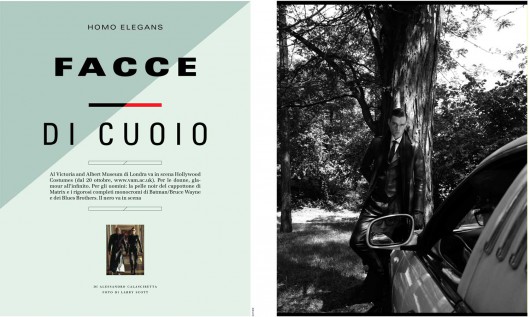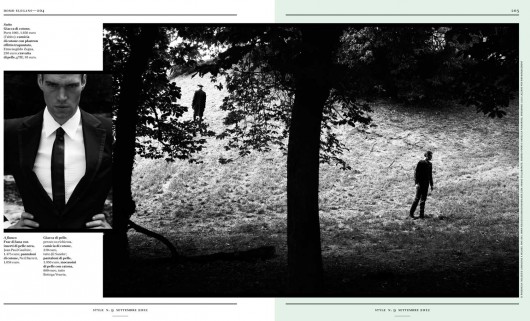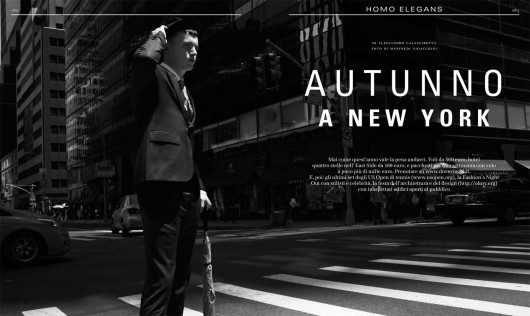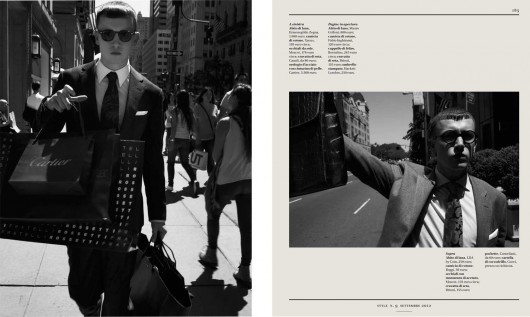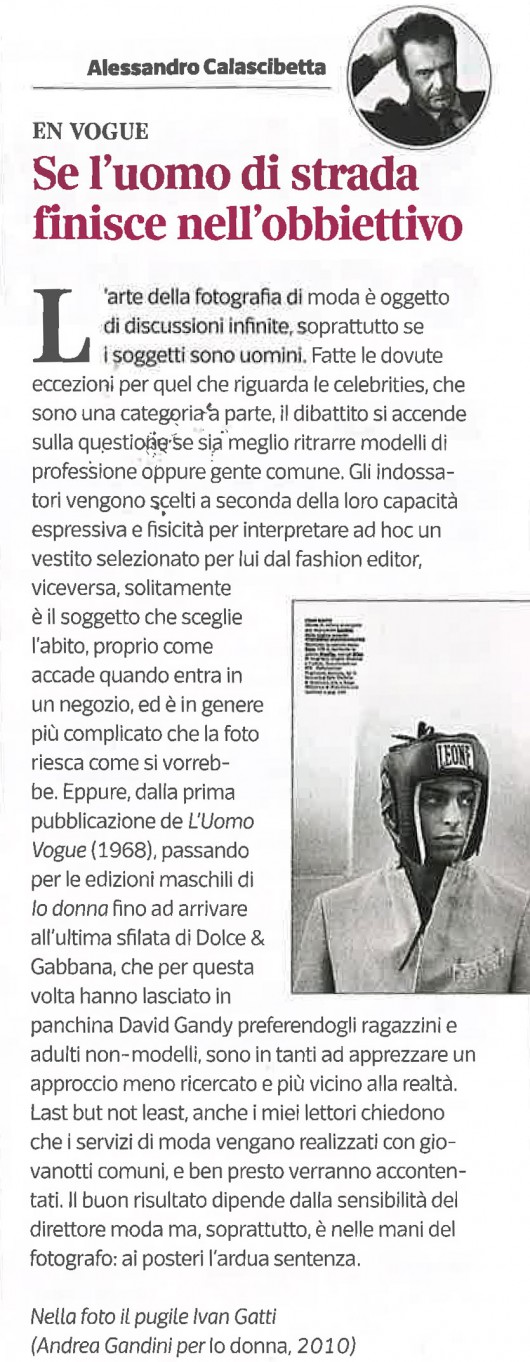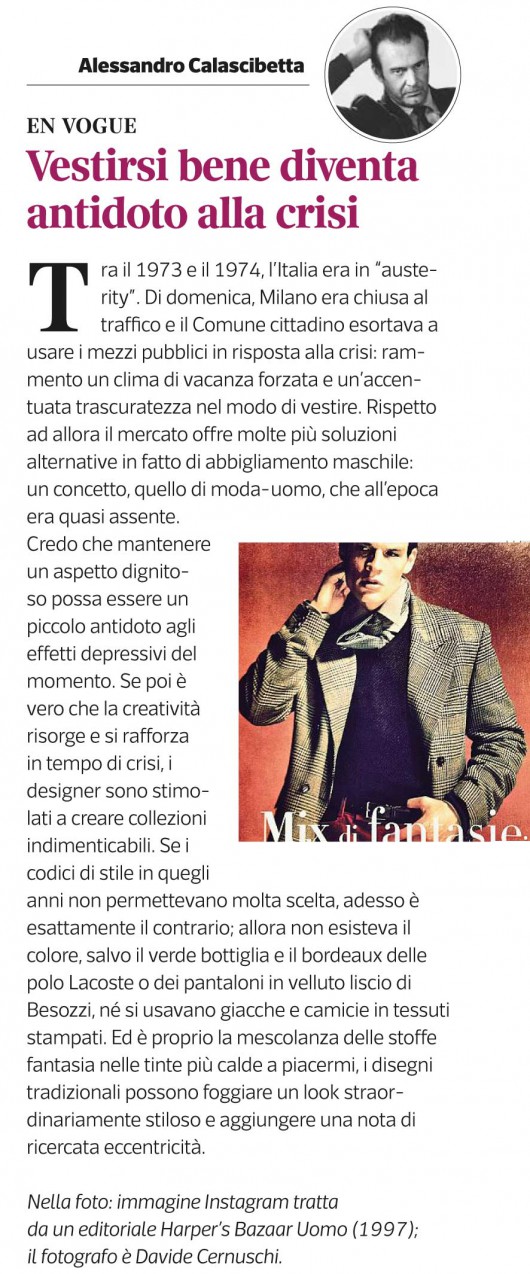
Between 1973 and 1974 Italy was facing a period of “austerity”. On sundays, in Milan the traffic used to be blocked, the municipality was pushing people to use public transports as an anti-crisis measure: I remember the forced holiday atmosphere and the scraffy way of dressing. Nowadays, there are many alternative solutions in menswear which at that time was almost a non-existing concept. I believe in maintaining a proper appearance as an atidote to this general depressing mood. If it’s true that creativity rises again strenghtened by crisis, then designers are being pushed to create some really epic collections. If at that time style wasn’t giving men much choice, today the situation is radically changed.; There were not many colours in menswear before, a part from the bottle-green and the classic reddish-brown of the polos by Lacoste and velvet trousers by Besozzi. Not even printed jackets and shirts were in use. I love the beauty of mixing and matching warm shades on printed fabrics, traditional designs can be extremely stylish and also add an elegant, unconvetional touch. Picture taken with Instagram, the original photo is by Davide Cernuschi, from an Harper’s Bazaar Uomo editorial, 1997.







 The fashion shooting was inspired by Carla Accardi and her works. This picture, referred to a portrait of the artist which was immortalized – black and white – with a trail of light made with a neon. This shot is by Michael Woolley, Etro jacket and knitted tie Hermès.
The fashion shooting was inspired by Carla Accardi and her works. This picture, referred to a portrait of the artist which was immortalized – black and white – with a trail of light made with a neon. This shot is by Michael Woolley, Etro jacket and knitted tie Hermès.
